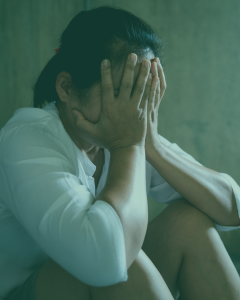Understanding Human Trafficking
Why talk about human trafficking in Canada?
Contrary to popular belief, human trafficking is a serious issue in Canada. According to national data, most victims are Canadian citizens, with a significant number being women and young girls. Traffickers exploit their victims’ vulnerabilities in various contexts, including sexual exploitation and forced labour.
This article aims to debunk common myths, shed light on the specific realities of human trafficking in Canada, and encourage people to recognize the signs and take action to protect victims.
 Myths and realities about human trafficking
Myths and realities about human trafficking
-
Myth 1: Human trafficking only involves foreigners.
Reality: Approximately 90% of identified victims in Canada are Canadian citizens, according to the Department of Justice. This shows that trafficking directly affects our communities.
-
Myth 2: It only happens in big cities.
Reality: While urban centres like Toronto, Vancouver, and Montreal are major hubs, trafficking also affects rural areas and small communities. Migrant workers in the agricultural and industrial sectors are particularly vulnerable to exploitation.
-
Myth 3: Trafficking is always violent and visible.
Reality: Traffickers often use subtle methods such as emotional manipulation, false promises of love or employment. These tactics make the signs of trafficking harder to detect.
Between 2009 and 2019, over 2,200 human trafficking cases were reported to Canadian police. However, the actual numbers may be much higher due to underreporting.

Understanding the different forms of human trafficking in Canada
Sexual exploitation
This form of trafficking accounts for about 95% of reported criminal cases in Canada. Victims, mainly women and young girls, are often recruited through social media or by people they trust. Traffickers prey on emotional and economic vulnerabilities to trap their victims.
Forced labour
Forced labour primarily affects temporary foreign workers, especially in agriculture, construction, and domestic work. Victims endure inhumane working conditions, withheld wages, or constant threats.
Key statistics:
- Over 50% of trafficking victims in Canada are between the ages of 18 and 24.
- About 25% of victims are minors.
Mechanisms of human trafficking and why it persists in Canada
Manipulation and coercion: How traffickers operate
Traffickers use various strategies to trap their victims:
- False job promises, such as modelling or restaurant work.
- Emotional relationships built through social media, following the “lover boy” method.
- Withholding identification documents and financial control.
Factors specific to Canada
- Indigenous populations’ vulnerability: Indigenous women and girls are overrepresented among victims of sexual exploitation due to socio-economic factors and systemic discrimination.
- Laws and awareness: Although laws exist to combat trafficking, enforcement is inconsistent, and awareness in some regions remains insufficient.
- Culture of silence Many victims do not report their situation due to fear of retaliation or distrust of authorities.

How to recognize the signs and take action in Canada
Recognizing the signs of human trafficking
- A person appears to be monitored or controlled.
- They live or work in precarious and unusual conditions.
- They do not have access to their identification documents or finances.
What to do if you suspect a case?
- Contact the Canadian Human Trafficking Hotline at 1-833-900-1010.
- Never directly confront a trafficker to avoid putting the victim at greater risk.
Raising awareness in your community
- Share reliable information and encourage those around you to be vigilant about the signs of trafficking.
Human trafficking is an invisible yet widespread reality in Canada. Although it affects thousands of victims, each of us can help break the cycle by staying informed, sharing resources, and reporting suspicious situations.
Together, we can offer victims a safer future and build a more vigilant and supportive community. If you want to take action, support local organizations like the Canadian Alliance to End Human Trafficking and learn about initiatives in your area.
By staying aware and informed, you can make a difference! 💡
Resources:
- Recognizing human trafficking
- Canadian Human Trafficking Hotline: 1-833-900-1010
- Our Family Resource Centres: Habitat Interlude and Moosonee Family Resource Centre